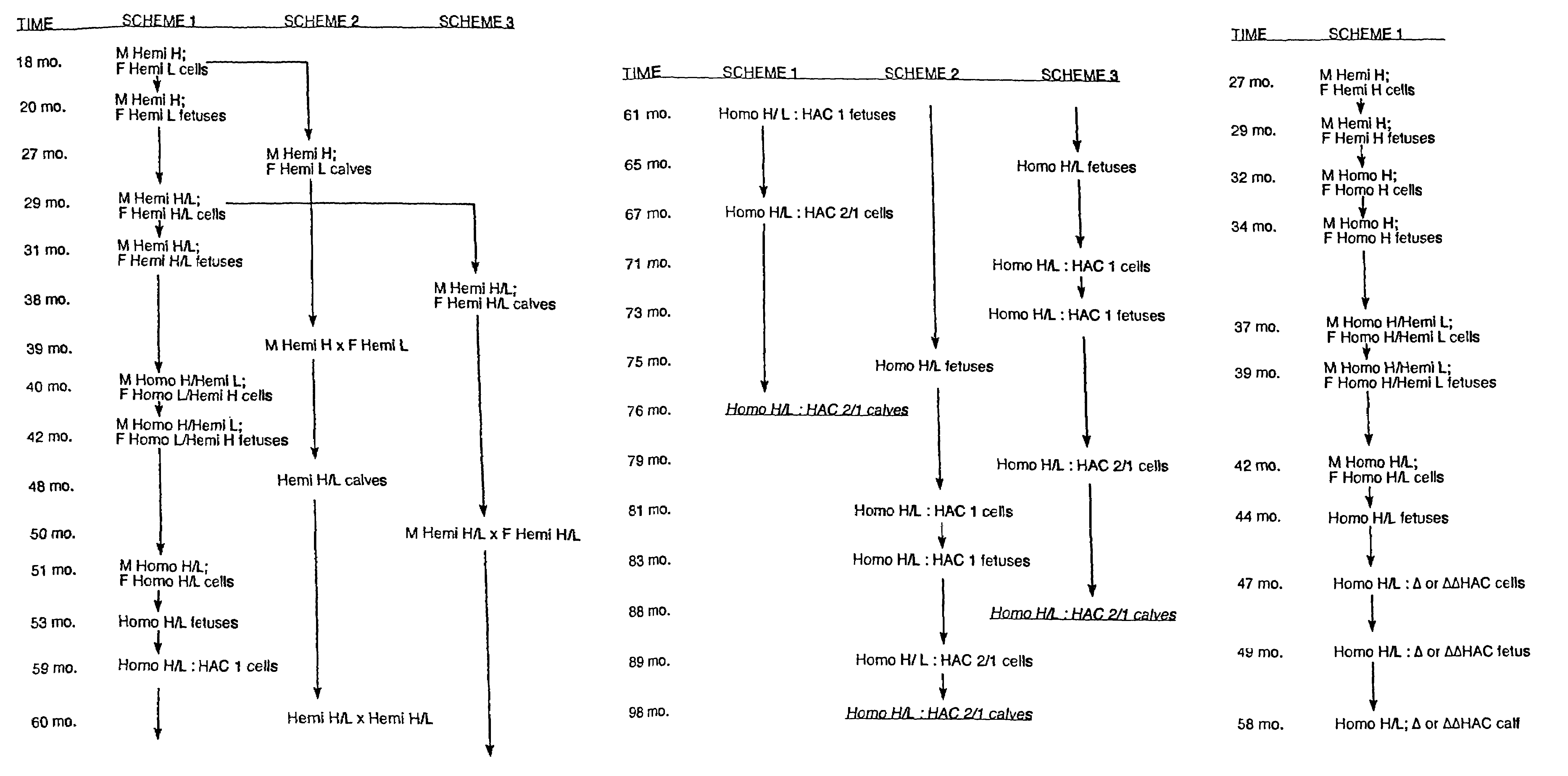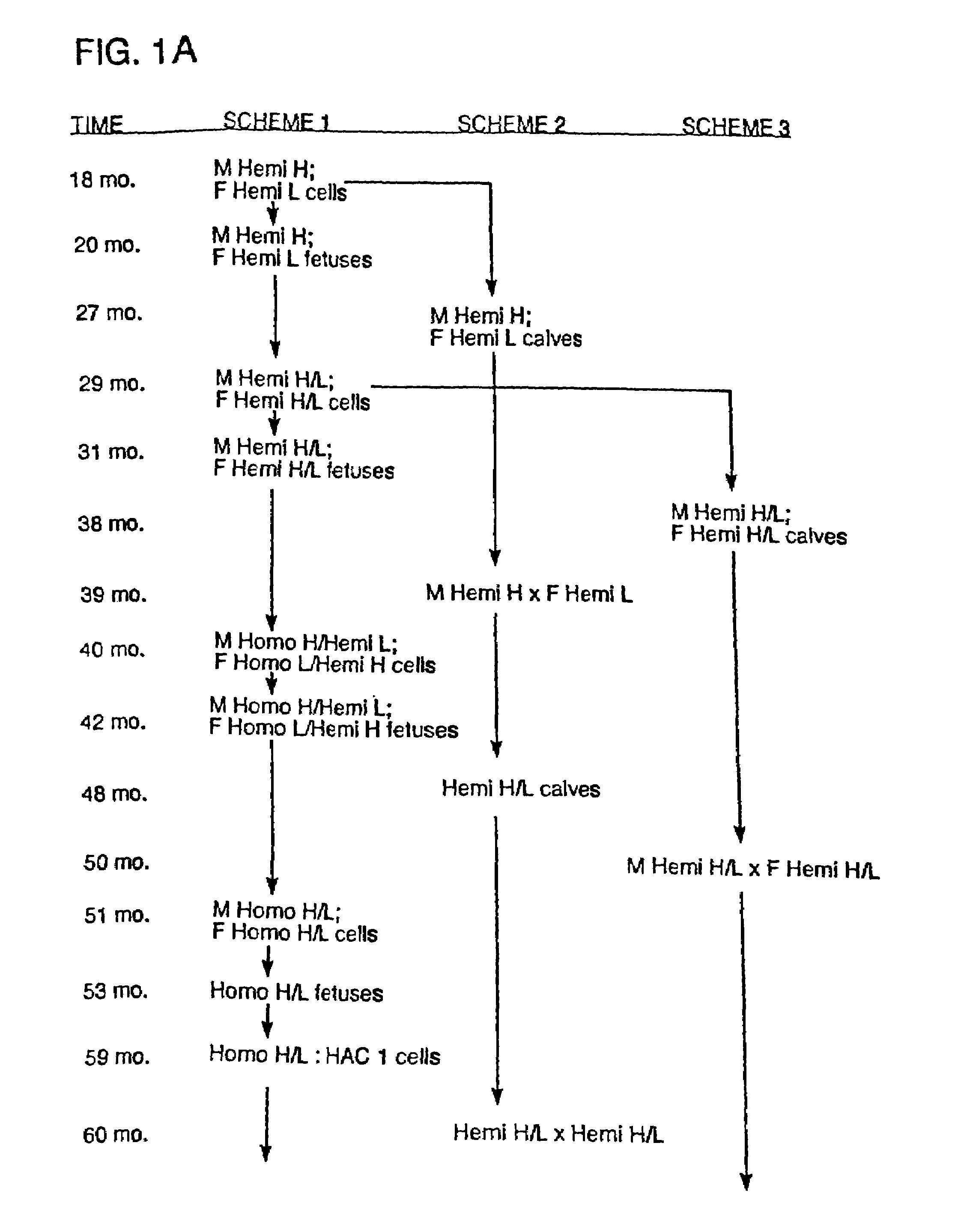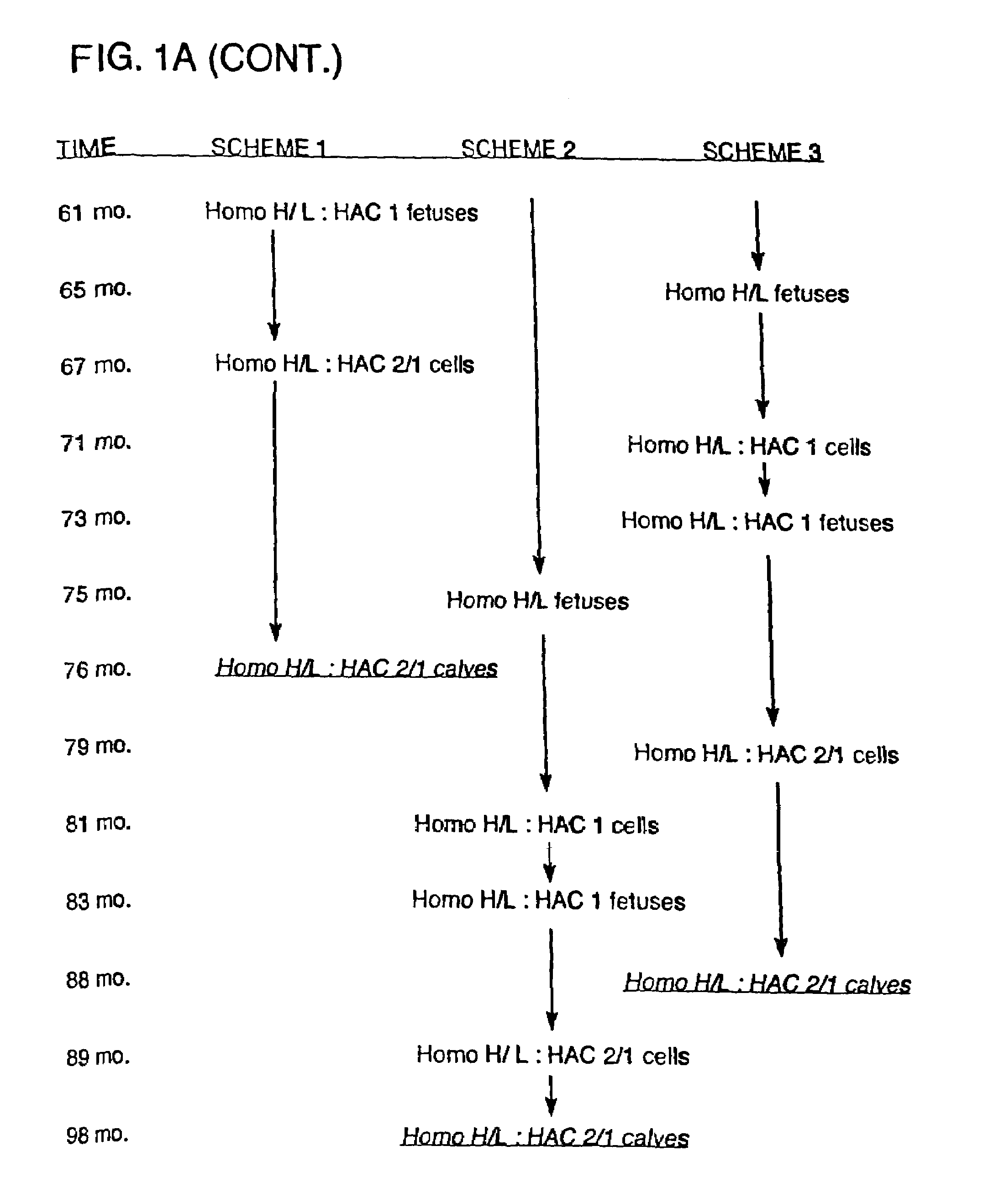Transgenic bovines having reduced prion protein production
a technology of prion protein and bovines, which is applied in the field of transgenic bovines having reduced prion protein production, can solve the problems of limited use of cattle in these industries, limited life-span of es cells from ungulates such as cattle, difficult isolation, culture, genetic modification, etc., and achieve the effect of reducing or no expression of prion protein and facilitating the generation of cloned transgenic ungulates
- Summary
- Abstract
- Description
- Claims
- Application Information
AI Technical Summary
Problems solved by technology
Method used
Image
Examples
example 1
Transgenic Ungulates Having Reduced Prion Protein Activity
[0188]Bovine fibroblast cell clones in which both alleles of the PrP locus are mutated were generated by sequential homologous recombination. The DNA construct for generating the PrP homozygous knockout cells was used to prevent transcription of functional, full-length PrP mRNA by inserting both a neomycin or puromycin-resistance gene (neo or puro, described in Example 3) and a transcription termination cassette (STOP) in exon 3 just behind its initial ATG codon. Thus, the resulting immature PrP transcripts lack the functional coding domain. The DNA construct containing neo gene (i.e., the PrPKOneo vector) was firstly electroporated into bovine fibroblast cell lines, and then neomycin-resistant colonies were isolated. Based on PCR analysis, homologous recombination in the exon 3 occurred in some colonies. Thus, bovine fibroblast cell lines in which one allele of PrP locus is mutated were generated. From the hemizygously mutat...
example 2
Introduction and Rearrangement of HAC
[0207]Summary of Procedures for Insertion of HACs
[0208]For the generation of ungulates (e.g., bovines) that have a mutation in one or both alleles of the prion gene and that express xenogenous antibody, standard methods may be used to insert a nucleic acid encoding a xenogenous antibody (e.g., a HAC) into a cell. For example, a HAC can be inserted before or after one or both alleles of the prion gene are inactivated. If desired, one or more endogenous antibody genes may also be mutated in the cell. The cell is then used in standard nuclear transfer procedures to produce the desired transgenic ungulate, as described in more detail below.
[0209]Essentially, male and female bovine fetal fibroblast cell lines containing human artificial chromosome sequences (e.g., #14fg., #2fg., and #22fg.) are obtained and selected and used to produce cloned calves from these lines.
[0210]For example, HACs derived from human chromosome #14 (“#14fg,” comprising the Ig ...
example 3
Transgenic Ungulates Producing Xenogenous Antibodies that Have a Mutation in One or More Endogenous Antibodies
[0306]In an ungulate that expressed xenogenous antibodies and that has a mutation in a prion gene as described in Example 2, the expression of endogenous antibodies may be optionally reduced by mutating one or more endogenous antibody genes. By increasing the number of functional xenogenous immunoglobulin heavy or light chain genes relative to the number of functional endogenous heavy or light chain genes, the percentage of B-cells expressing the desired xenogenous antibodies (e.g., human therapeutic antibodies) should increase.
[0307]To generate these transgenic ungulates, ΔHAC or ΔΔHAC transgenic ungulates may be mated with transgenic ungulates containing a mutation in one or both alleles of an endogenous immunoglobulin chain (e.g., a mu heavy chain or a lambda or kappa light chain). If desired, the resulting transgenic ungulates may be mated with (i) transgenic ungulates c...
PUM
| Property | Measurement | Unit |
|---|---|---|
| time | aaaaa | aaaaa |
| time | aaaaa | aaaaa |
| pH | aaaaa | aaaaa |
Abstract
Description
Claims
Application Information
 Login to View More
Login to View More - R&D
- Intellectual Property
- Life Sciences
- Materials
- Tech Scout
- Unparalleled Data Quality
- Higher Quality Content
- 60% Fewer Hallucinations
Browse by: Latest US Patents, China's latest patents, Technical Efficacy Thesaurus, Application Domain, Technology Topic, Popular Technical Reports.
© 2025 PatSnap. All rights reserved.Legal|Privacy policy|Modern Slavery Act Transparency Statement|Sitemap|About US| Contact US: help@patsnap.com



